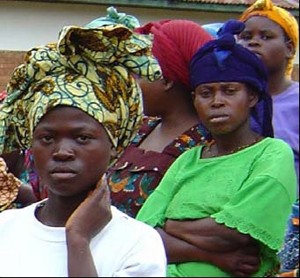
Challenge
The issues facing children abducted or coerced into joining armed forces are particularly difficult for the international community to address. Children are frequently left out of the formal disarmament, demobilization, and reintegration structure. In addition, they are afraid of seeking outside help for fear of being identified as ex-combatants and held accountable by their communities for atrocities committed during times of conflict. Throughout the 10- year conflict in the Democratic Republic of the Congo (DRC), armed groups abducted many girls and boys under 18 to work with fighting forces. Female abductees were forced into marriage or sexual slavery and faced high levels of gender-based violence. Upon leaving — whether through escape or voluntary release by armed groups — and returning to their communities, these girls faced enormous challenges. Ostracized by their families or distrusted by the community at large, many tried to hide rather than seek help.
Initiative
In the DRC, USAID supports work in Ituri District to assist and reintegrate abducted boys and girls and the children conceived by abducted girls during their time with the fighting forces. The project helps reintegrate victims into their communities safely and prevent future abduction, trafficking, and sexual violence. An extensive communication campaign addresses discrimination directly through door-to-door outreach to abducted girls and meetings with community leaders to change attitudes. The program provides a comprehensive package of services to victims, including psychosocial counseling, family tracing and mediation, health assistance, education, skills training, social activities, and economic assistance.
Through social activities, workshops on discrimination, and dialogue with parents and neighbors, the program encourages girls’ participation in education and training.
Results
In one year of the program, 1,905 children, including 1,039 girls, were identified and provided medical care, and age-appropriate psychological support. More than 3,000 community awarenessraising sessions were held through discussions and debates, cultural activities, street theater, community days, and radio programs hosted by children and community leaders.







Comment
Make a general inquiry or suggest an improvement.